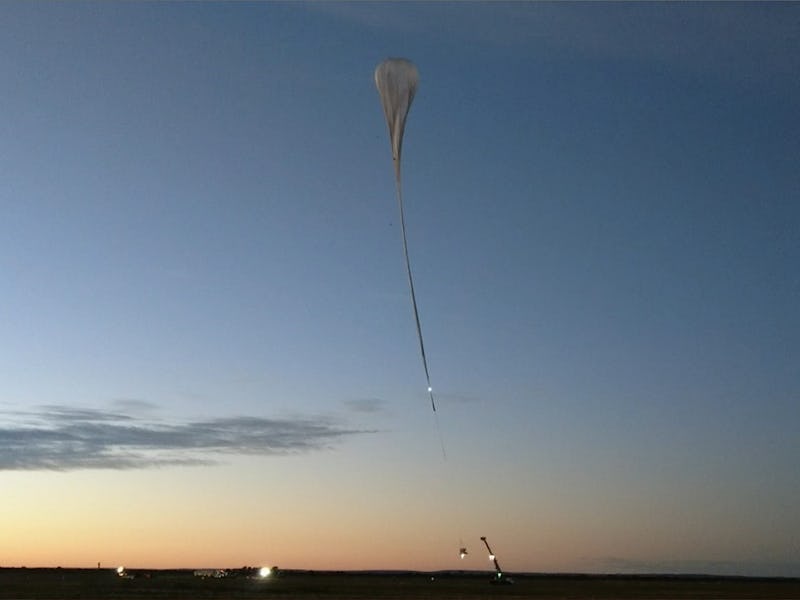Astronomers Used This Old Technology To Snapshot An Elusive Gamma-Ray Beam
Not all scientific breakthroughs are high-tech ones.

The pulsar Vela rests a thousand light years away from Earth in a tattered cloud of gas and dust that used to be the guts of a massive star. These magnetic field of this dense, burned-out corpse of star blasts jets of charged particles outward from both poles at nearly the speed of light, releasing bright beams of radio waves, visible light, x-rays, and even gamma rays.
Traversing the vast expanse of interstellar space, these rays eventually sweep past Earth like a cosmic lighthouse beam, pulsing about 11 times every second. A team of astrophysicists from Kobe University recently captured the highest-resolution image of Vela’s gamma-ray beam, but they didn’t use a hyper-advanced space telescope or a massive antenna array — instead, they used a balloon and a stack of film.
Kobe University astrophysicist Shigeki Aoki and his colleagues published their work in The Astrophysical Journal.
This image shows a map of gamma rays detected from the Vela pulsar.
Old-School Tools, All-New Science
Although this experiment is doing some breakthrough astronomy, its setup sounds like something out of the 19th century. To image these high-energy beams, Aoki and his colleagues bundled together several sheets of photographic film in a stack and then suspended the stack of film beneath a high-altitude balloon. As the balloon drifted between 22 and 25 miles above the ground in the mid-stratosphere, gamma rays bombarded the sheets. Cameras suspended alongside the film recorded the balloon’s position in relation to the stars so scientists could track the gamma rays’ point of origin.
Photographic film is one of the oldest and simplest ways to detect radiation because it turns dark when exposed to radiation (Kodak accidentally detected a-bombing testing in the 1940s using this technique). Gamma rays have such short wavelengths that they can slip through most types of matter (including types that would otherwise block longer wavelengths of light like x-rays ), but film records their passing. By comparing how the gamma-ray tracks in each sheet of film in the stack line up, Aoki and his colleagues precisely measured the trajectory of each gamma ray through their improvised instrument.
The dark spots on the film reveal where gamma rays passed through the film during its balloon flight.
“By adding time information and combining it with attitude monitoring information, we were able to determine ‘when’ and ‘where’ the events originated,” says Aoki in a recent statement. “The resulting resolution was more than 40 times higher than that of conventional gamma-ray telescopes.”
The result is the most accurate image of the Vela pulsar that astronomers have ever captured. Vela is one of the brightest pulsars in the sky, and some of the gamma rays it pumps out carry 20 trillion electron volts of energy. Physicists still aren’t sure how it manages that feat, but taking a more detailed look at the pulsar’s gamma ray beams — whether by telescope or balloon — could help solve the mystery.